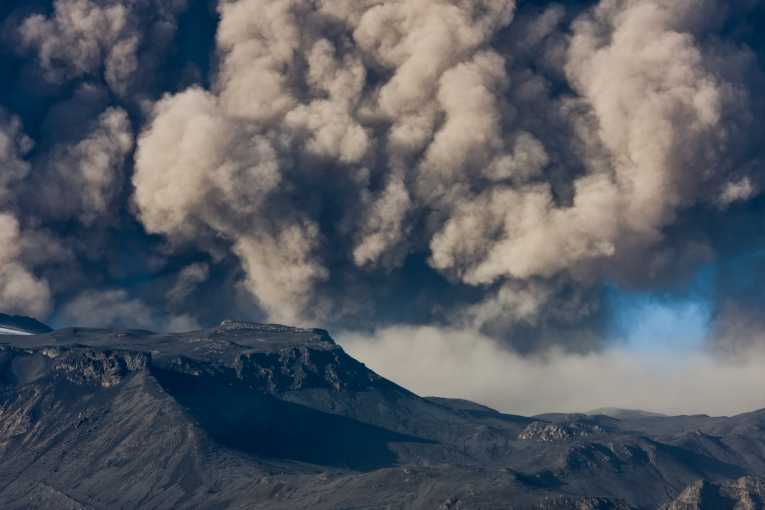A cloud of ash from an erupting Icelandic volcano is threatening to disrupt the travel plans of thousands of holiday-makers for the second year in succession.
Last April, Eyjafjallajokull erupted, sending a plume of ash into the skies over northern Europe which caused 20 countries to close their airspace stranding hundreds of thousands of travellers.
There was a small spark of green good news in the eruption which pumped 150,000 tonnes of CO2 into the atmosphere each day while the cancelled flights would have emitted around 344,109 tonnes of CO2-per day.
On Saturday, 21 May Grimsvotn, Iceland's most active volcano, started to erupt sending ash plumes seven miles into the sky, rising to a peak altitude of 12 miles. Yesterday (May 23) 2,000 tonnes of ash a second were coming out of the crater, with 120 million tonnes released in the first 48 hours.
Grimsvotn last erupted in 2004 and this is the strongest eruption of the caldera volcano in a century. It has been classified as a four on the eight point Volcanic Explosivity Index.
The first indications from Iceland were that air transport would not be badly affected by the eruption, which was forecast to drift east then north. However, authorities were concerned enough by the possibility of disruption that US President Barack Obama cut short his visit to Ireland in order to fly to the UK and the British Government called a meeting of the emergency COBRA committee for this afternoon.
By this morning, flight cancellations were starting and transatlantic travellers were warned of longer journey times as planes navigated around the ash cloud.
Scientists have also reported that Grimsvotn produces a different type of ash from that which caused such chaos in 2010.
Politicians in the UK say that lessons have been learned from last year's eruption and better monitoring of the eruption means that the disruption will be limited. The Civil Aviation Authority has also introduced graded classification of ash concentration, allowing planes to fly in some conditions when last year they were grounded en-masse.
Philip Hammond, the English transport secretary, told BBC News: ''Most importantly, the basic situation now is that the threshold for most aircraft is 20 times where it was last year. We have got from 200 micrograms [mcg] per cubic metre to 4,000mcg per cubic metre as the threshold up to which most aircraft can fly.''
''What we can't promise is that there won't be disruption when there is a major natural event like this.''
Nonetheless Ryanair has said even these restrictions are too much and today (May 24) flew a plane through the restricted area over Scotland.
A spokeswoman for Ryanair told the Belfast Telegraph: ''There was no visible volcanic ash cloud or any other presence of volcanic ash and the post-flight inspection revealed no evidence of volcanic ash on the airframe, wings or engines.''
''The absence of any volcanic ash in the atmosphere supports Ryanair's stated view that there is no safety threat to aircraft in this mythical 'red zone', which is another misguided invention by the UK Met Office and the CAA (Civil Aviation Authority).''
NATS, the British national air traffic control system, said at 9.30am today that while no airports had closed, services were affected to and from: Londonderry, Glasgow, Edinburgh, Prestwick, Newcastle, Carlisle, Durham Tees Valley and Cumbernauld.
Travellers were being advised to remain in close contact with their airlines.
Grimsvotn, which is largely covered by ice, has historically been troublesome for the people of Iceland. Its eruptions are often accompanied by floods of glacier meltwater. In 1783 the volcano's eruption triggered a famine that killed a fifth of the Icelandic population.
Volcanic activity can have an effect on the climate, and the largest have caused severe weather thousands of miles from the actual eruption. In 1815, the eruption of Mount Tambora in Indonesia, caused unseasonable weather in Europe and America the following year, leading 1816 - when snow fell in August - to be dubbed, the year without a summer.
Eruptions produce CO2, although the amount is dwarfed by what we pour into the atmosphere, and have an amplifying effect on the ozone effect and the haze effect.
Update - 3.30pm
At 3.30pm NATS announced that flights to and from the following airfields could be disrupted by the ash cloud: Barra, Glasgow, Edinburgh, Prestwick, Newcastle, Carlisle, Durham Tees Valley, Cumbernauld and Tiree. Earlier BA announced it wouldn't operate any flights today to or from Edinburgh, Glasgow and Newcastle airports. BMI also cancelled its Edinburgh and Glasgow services but said the airline would be able to restart services from Aberdeen later in the day.
Meanwhile in Iceland, the government announced that activity at the Grimsvotn volcano was decreasing, with less material being thrown from the crater and reaching lower altitudes. Life in Iceland - where eruptions are relatively common - has been largely unaffected by the cloud with most flights in and out of the country continuing and only a few roads close to the eruption site, a popular tourist attraction, closing for safety reasons.
Top image: Volcanic ash cloud.










